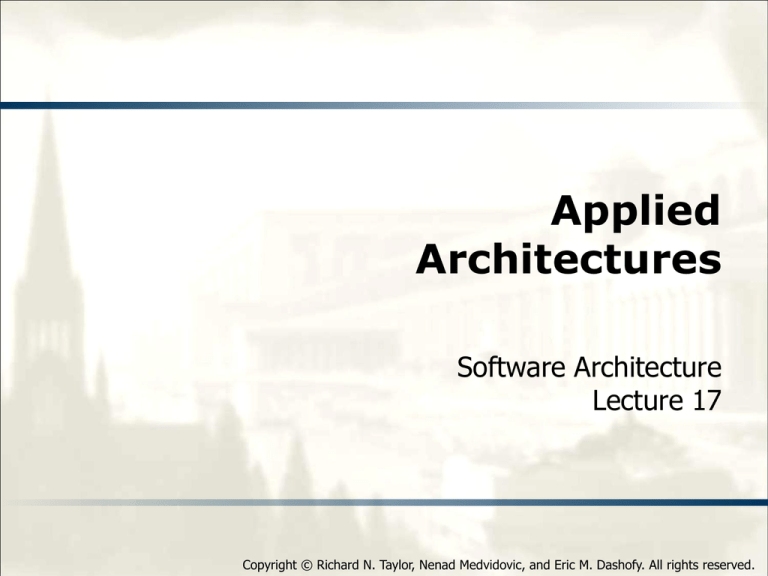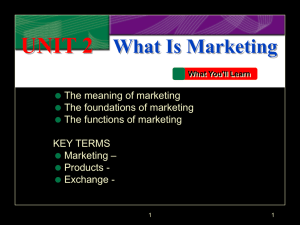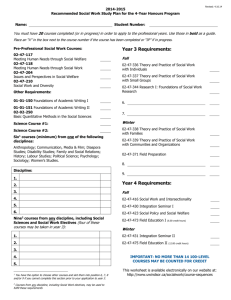
Applied
Architectures
Software Architecture
Lecture 17
Copyright © Richard N. Taylor, Nenad Medvidovic, and Eric M. Dashofy. All rights reserved.
Software Architecture: Foundations, Theory, and Practice
Objectives
Illustrate how principles have been used to solve
challenging problems
Usually means combining elements
Highlight some critical issues
I.e., ignore them at your peril
Show how architecture can be used to explain and
analyze common commercial systems
2
Software Architecture: Foundations, Theory, and Practice
Outline
Distributed and networked architectures
Limitations
REST
Commercial Internet-scale applications
Decentralized applications
Peer-to-peer
Web services
Some interesting domains
Robotics
Wireless sensors
Flight simulators
3
Software Architecture: Foundations, Theory, and Practice
Limitations of the Distributed Systems
Viewpoint
The network is reliable
Latency is zero
Bandwidth is infinite
The network is secure
Topology doesn’t change
There is one administrator
Transport cost is zero
The network is homogeneous
-- Deutsch & Gosling
4
Software Architecture: Foundations, Theory, and Practice
Architecture in Action: WWW
(From lecture #1) This is the Web
5
Software Architecture: Foundations, Theory, and Practice; Richard N. Taylor, Nenad Medvidovic, and Eric M. Dashofy; © 2008 John Wiley & Sons, Inc. Reprinted with permission.
Software Architecture: Foundations, Theory, and Practice
Architecture in Action: WWW
(cont’d)
So is this
6
Software Architecture: Foundations, Theory, and Practice; Richard N. Taylor, Nenad Medvidovic, and Eric M. Dashofy; © 2008 John Wiley & Sons, Inc. Reprinted with permission.
Software Architecture: Foundations, Theory, and Practice
Architecture in Action: WWW
And this
7
Software Architecture: Foundations, Theory, and Practice; Richard N. Taylor, Nenad Medvidovic, and Eric M. Dashofy; © 2008 John Wiley & Sons, Inc. Reprinted with permission.
Software Architecture: Foundations, Theory, and Practice
WWW’s Architecture
The application is distributed (actually, decentralized)
hypermedia
Architecture of the Web is wholly separate from the code
There is no single piece of code that implements the
architecture.
There are multiple pieces of code that implement the various
components of the architecture.
E.g., different Web browsers
Stylistic constraints of the Web’s architectural style are not
apparent in the code
The effects of the constraints are evident in the Web
One of the world’s most successful applications is only
understood adequately from an architectural vantage point.
8
Software Architecture: Foundations, Theory, and Practice
REST Principles
[RP1] The key abstraction of information is a resource,
named by an URL. Any information that can be named
can be a resource.
[RP2] The representation of a resource is a sequence of
bytes, plus representation metadata to describe those
bytes. The particular form of the representation can be
negotiated between REST components.
[RP3] All interactions are context-free: each interaction
contains all of the information necessary to understand
the request, independent of any requests that may have
preceded it.
9
Software Architecture: Foundations, Theory, and Practice
REST Principles (cont’d)
[RP4] Components perform only a small set of welldefined methods on a resource producing a
representation to capture the current or intended state
of that resource and transfer that representation
between components. These methods are global to the
specific architectural instantiation of REST; for instance,
all resources exposed via HTTP are expected to support
each operation identically.
10
Software Architecture: Foundations, Theory, and Practice
REST Principles (cont’d)
[RP5] Idempotent operations and representation
metadata are encouraged in support of caching and
representation reuse.
[RP6] The presence of intermediaries is promoted.
Filtering or redirection intermediaries may also use both
the metadata and the representations within requests or
responses to augment, restrict, or modify requests and
responses in a manner that is transparent to both the
user agent and the origin server.
11
Software Architecture: Foundations, Theory, and Practice
An Instance of REST
Pro xy
$
h ttp
a
$
h ttp
o rb
b
Pro xy
$
h ttp
Client Con nector:
h ttp
$
h ttp
c
DNS
Origin Servers
DNS
User Agent
$
Gateway
Client+Cach e: $
wais
Server Co nn ecto r:
Server+Cach e:
$
12
Software Architecture: Foundations, Theory, and Practice
REST — Data Elements
Resource
Key information abstraction
Resource ID
Representation
Data plus metadata
Representation metadata
Resource metadata
Control data
e.g., specifies action as result of message
13
Software Architecture: Foundations, Theory, and Practice
REST — Connectors
Modern Web Examples
client
libwww, libwww-perl
server
libwww, Apache API, NSAPI
cache
browser cache, Akamai cache network
resolver bind (DNS lookup library)
tunnel
SOCKS, SSL after HTTP CONNECT
14
Software Architecture: Foundations, Theory, and Practice
REST — Components
User agent
e.g., browser
Origin server
e.g., Apache Server, Microsoft IIS
Proxy
Selected by client
Gateway
Squid, CGI, Reverse proxy
Controlled by server
15
Software Architecture: Foundations, Theory, and Practice
An Instance of REST
Pro xy
$
h ttp
a
$
h ttp
o rb
b
Pro xy
$
h ttp
Client Con nector:
h ttp
$
h ttp
c
DNS
Origin Servers
DNS
User Agent
$
Gateway
Client+Cach e: $
wais
Server Co nn ecto r:
Server+Cach e:
$
16
Software Architecture: Foundations, Theory, and Practice
Derivation of REST
Key choices in this derivation include:
Layered Separation (a theme in the middle portion of
diagram) is used to increase efficiencies, enable
independent evolution of elements of the system, and
provide robustness;
Replication (left side of the diagram) is used to address
latency and contention by allowing the reuse of
information;
Limited commonality (right side) addresses the
competing needs for universally understood operations
with extensibility.
The derivation is driven by the application(!)
17
Software Architecture: Foundations, Theory, and Practice
Derivation of REST (cont’d)
18
Software Architecture: Foundations, Theory, and Practice; Richard N. Taylor, Nenad Medvidovic, and Eric M. Dashofy; © 2008 John Wiley & Sons, Inc. Reprinted with permission.
Software Architecture: Foundations, Theory, and Practice
REST: Final Thoughts
REpresentational State Transfer
Style of modern web architecture
Web architecture one of many in style
Web diverges from style on occasion
e.g., Cookies, frames
Doesn’t explain mashups
19
Software Architecture: Foundations, Theory, and Practice
Commercial Internet-Scale
Applications
Akamai
Caching to the max
Google
Google distributed file system (GFS)
MapReduce
Data selection and reduction
All parallelization done automatically
20
Software Architecture: Foundations, Theory, and Practice
Architectural Lessons from Google
Abstraction layers abound: GFS hides details of data
distribution and failure, for instance; MapReduce hides
the intricacies of parallelizing operations;
By designing, from the outset, for living with failure of
processing, storage, and network elements, a highly
robust system can be created;
Scale is everything: Google’s business demands that
everything be built with scaling issues in mind;
21
Software Architecture: Foundations, Theory, and Practice
Architectural Lessons from Google
(cont’d)
By specializing the design to the problem domain,
rather than taking the generic “industry standard”
approach, high performance and very cost-effective
solutions can be developed;
By developing a general approach (MapReduce) to
the data extraction/reduction problem, a highly reusable
service was created.
22








